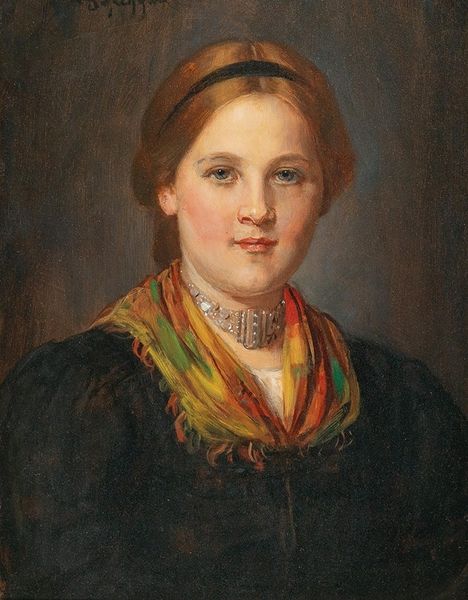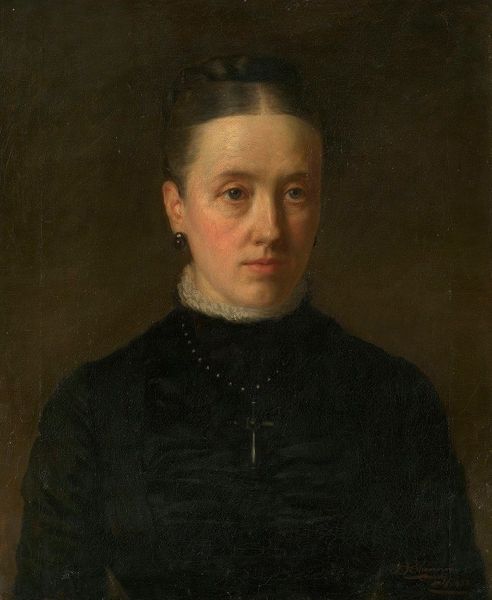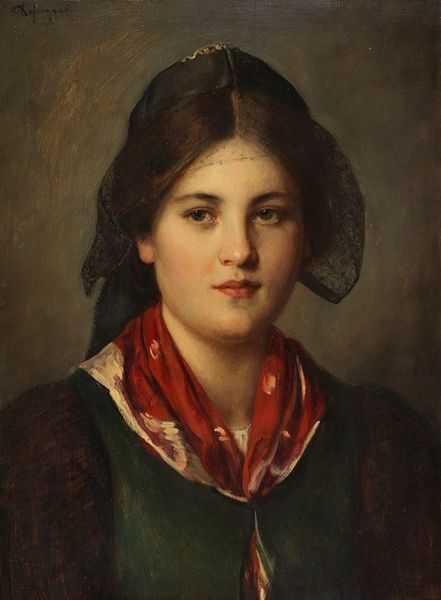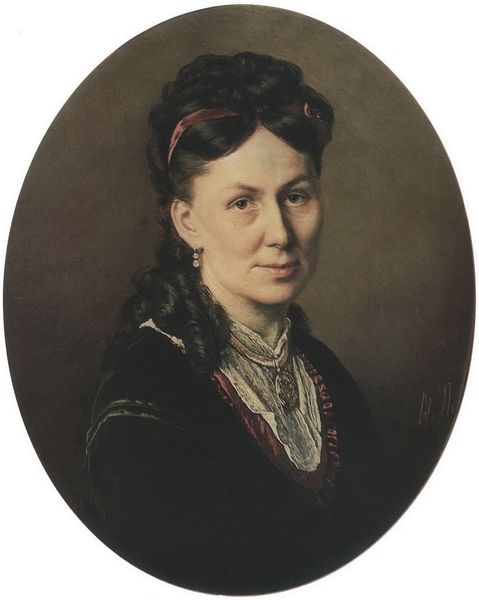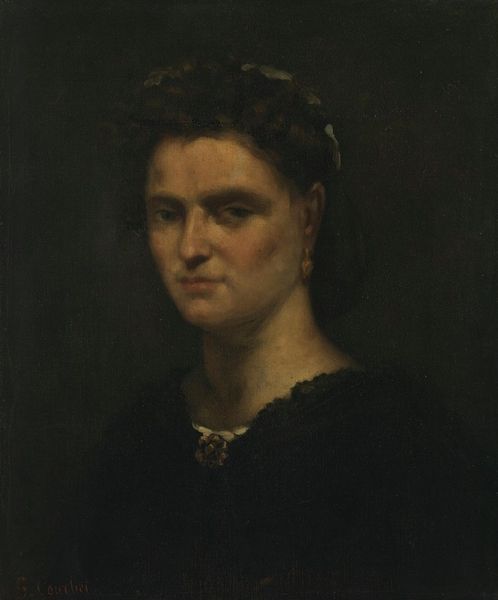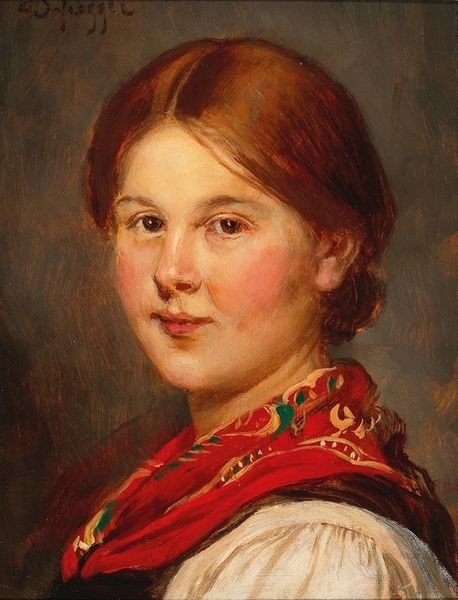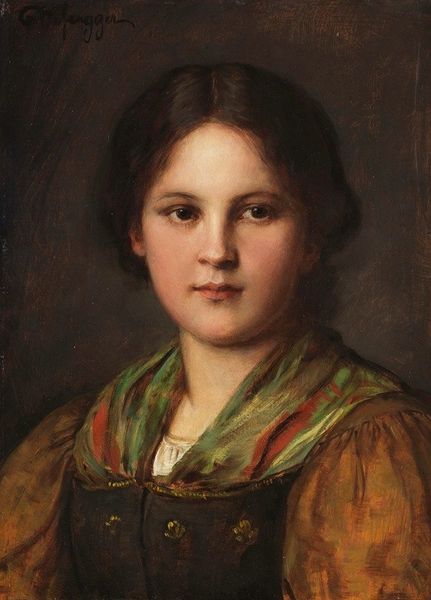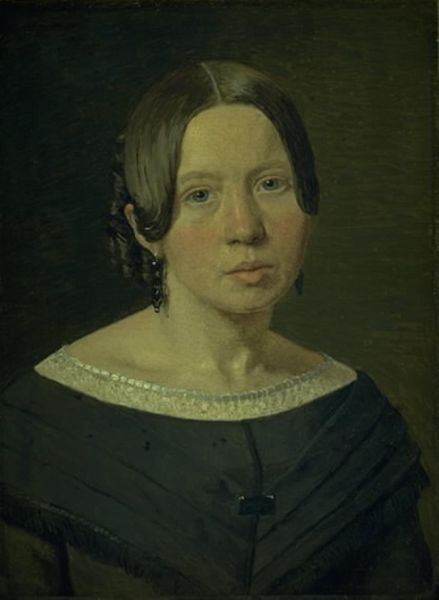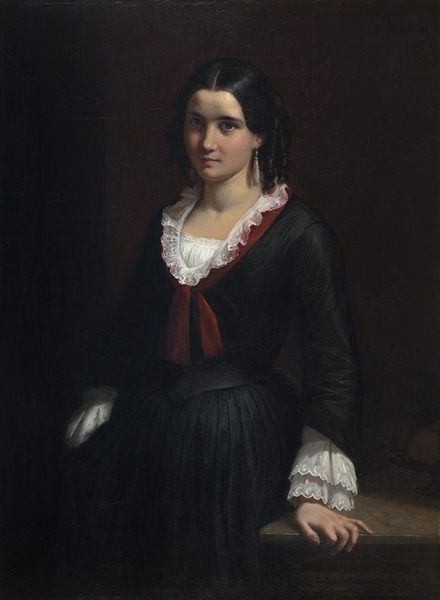
#
figurative
#
portrait
#
portrait reference
#
portrait head and shoulder
#
animal portrait
#
animal drawing portrait
#
portrait drawing
#
facial portrait
#
portrait art
#
fine art portrait
#
digital portrait
Copyright: Public Domain: Artvee
Curator: Let’s spend a moment with Jean-François Millet’s "Portrait of Madame Martin," painted around 1840. Editor: She looks like someone weighed down, perhaps by the constraints of her era? There’s a solemnity to her gaze and the way Millet uses such somber colors. Curator: Indeed, portraiture of this period, especially in burgeoning bourgeois circles, served very specific functions. It solidified social status and projected ideals of respectability. Consider also Millet’s own complex relationship to these social strata—always somewhat of an outsider looking in. Editor: The light seems concentrated on her face and lace collar, almost isolating them. I'm drawn to how that stark white lace is rendered, it's almost sculptural against the deep blue of her dress. It brings your eye immediately to the face. Curator: Notice, though, the restraint Millet employs. While her clothing and jewelry signal a certain economic standing, there’s an absence of overt grandeur, perhaps mirroring Millet's own inclinations towards a less ostentatious representation of the bourgeoisie. Editor: Do you think that impacts how we, as contemporary viewers, interpret the portrait? That almost suppressed, or internalized emotion gives it such presence. It feels more about interiority than external display. Curator: I believe it does. The art world, and its patronage systems, were evolving in ways that gave artists space to be critical of the status quo, while also participating in it. Someone like Millet, portraying the burgeoning middle class, inevitably brings a perspective that questions, or at least nuances, the dominant narratives of success and power. Editor: Ultimately, it’s a surprisingly complex work—more than just a representation of a person, but a record of societal forces at play. Curator: Precisely, it is this intersection that makes such seemingly simple portraits so endlessly compelling. It reminds us that images are never just reflections but active participants in shaping our world.
Comments
No comments
Be the first to comment and join the conversation on the ultimate creative platform.
